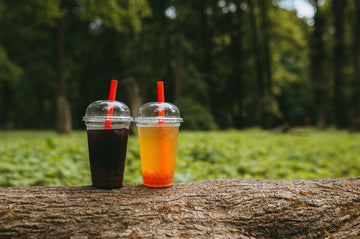Bubble tea, or "boba," is more than just a drink—it's a lifestyle and pop culture phenomenon that's winning hearts around the world. But what exactly is bubble tea? Why did it become so popular so quickly? In this article, we'll explore the origins of bubble tea, its ingredients, and its special place in modern culture.
The Origin of Bubble Tea – A Story From Taiwan
Bubble tea has its roots in Taiwan in the 1980s. It was originally created as a cold, refreshing tea with milk and sweetener. Legend has it that a local tea shop accidentally experimented by adding tapioca pearls, starch balls extracted from the tapioca root, to its tea drink. This simple addition gave the drink a unique texture and created something completely new – a drink with a chewy “bubble” element.
Bubble tea soon became a local phenomenon, and in the 1990s it spread beyond Taiwan, beginning its journey to global popularity. Bubble tea is now available all over the world, from Asia to Europe and America.
What Makes Bubble Tea So Special?
Bubble tea is special because of its variety of ingredients and personalization options. The classic version usually consists of cold or warm black or green tea, milk or plant-based milk, sweetener and tapioca pearls. However, other ingredients can also be added, such as fruit syrups, jelly cubes, fruit-flavored popping boba and even seed extracts. As a result, everyone can create their own unique bubble tea combination.
Tapioca pearls are what make the drink so interesting. They are black or transparent balls made from tapioca, a starch derived from the cassava root. Bubble tea pearls are boiled until they have a chewy yet soft consistency that perfectly complements the taste of the tea.
In conclusion
Bubble tea is more than a drink – it’s a culture and a lifestyle. From its Taiwanese roots to its current global popularity, bubble tea continues to evolve and offer new and exciting ways to enjoy this unique beverage.

